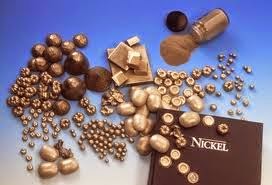NIFTY 50 25
CNXMDCAP 150 75
ASHOKLEY 11000 8000
AXISBANK 1250 500
GMRINFRA 10000 9000
HAVELLS 1250 1000
IFCI 9000 8000
NHPC 12000 10000
UNITECH 17000 9000
—————————————–
ADANIENT 1000 500
ADANIENT 1000 500
ADANIPORTS 2000 1000
ALBK 4000 2000
AMBUJACEM 2000 1000
ARVIND 2000 1000
AUROPHARMA 500 250
BANKBARODA 500 250
BHARATFORG 1000 250
BHARTIARTL 1000 500
BHEL 2000 1000
CENTURYTEX 1000 500
CIPLA 1000 500
COLPAL 250 125
CROMPGREAV 2000 1000
DABUR 2000 1000
DISHTV 8000 4000
DIVISLAB 250 125
FEDERALBNK 4000 2000
GAIL 1000 500
HCLTECH 250 125
HDFCBANK 500 250
HDIL 8000 4000
HINDPETRO 1000 500
IGL 1000 500
INDIACEM 4000 2000
IOB 8000 4000
IRB 4000 1000
KOTAKBANK 500 250
MOTHERSUMI 1000 500
ONGC 1000 500
ORIENTBANK 2000 1000
PFC 2000 1000
PNB 500 250
RANBAXY 1000 500
RELCAPITAL 1000 500
SIEMENS 500 250
SRTRANSFIN 500 250
SSLT 2000 1000
SUNPHARMA 500 250
SYNDIBANK 4000 2000
TATAMOTORS 1000 500
TATAMTRDVR 2000 1000
TATASTEEL 1000 500
TVSMOTOR 2000 1000
UNIONBANK 2000 1000
UPL 2000 1000
VOLTAS 2000 1000
YESBANK 1000 500
————————————–
UBL 250 500Revision of Market Lot of Derivative Contracts on Indices
UBL 250 500Revision of Market Lot of Derivative Contracts on Indices
NIFTY Present Market Lot 50 Revised Market lot 25
Nifty Midcap 50 Present Market Lot 150 Revised Market lot 75
Nifty Midcap 50 Present Market Lot 150 Revised Market lot 75
All contracts in the above mentioned Indices shall have the new market lot with effect from October 31, 2014
DEPARTMENT : FUTURES & OPTIONS Download Ref No : NSE/FAOP/27733 Date : September 30, 2014
Circular Ref. No : 069/2014
Circular Ref. No : 069/2014
*-*-*-*-*-*-*-*-*-*-*-*-*-*-*-*-*-*-*-*-*-*-*-*-*-*-*-*-*-*-*-*-*-*-*-*-*-*-*-*-*-*
 DEPARTMENT : FUTURES & OPTIONS Download Ref No : NSE/FAOP/27734 Date : September 30, 2014
DEPARTMENT : FUTURES & OPTIONS Download Ref No : NSE/FAOP/27734 Date : September 30, 2014Circular Ref. No : 070/2014
INDIAVIX Present Market Lot 550 Revised Market lot 800
The revised lot size shall be applicable to contracts with expiry date October 28, 2014 and onwards
The revised lot size shall be applicable to contracts with expiry date October 28, 2014 and onwards












